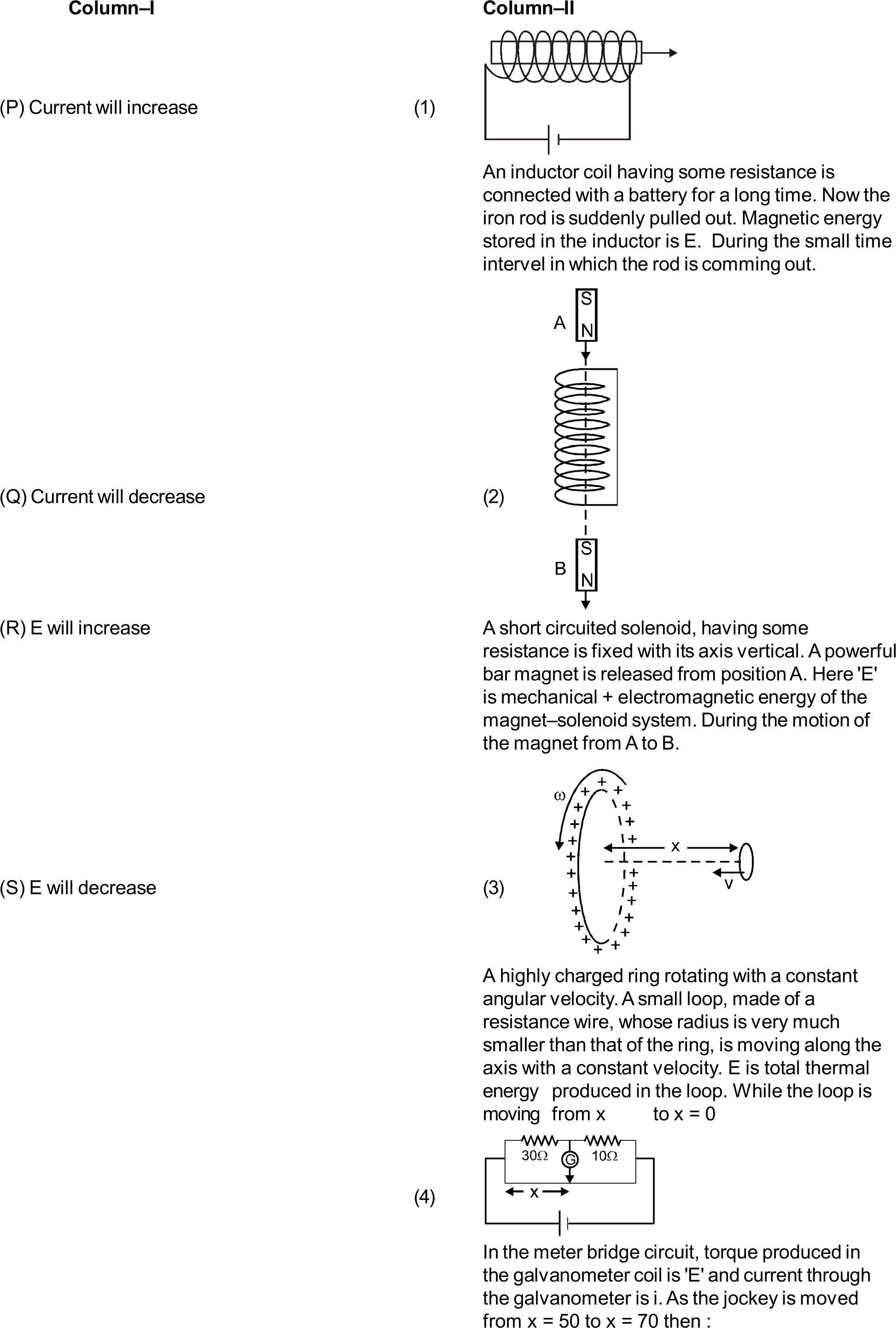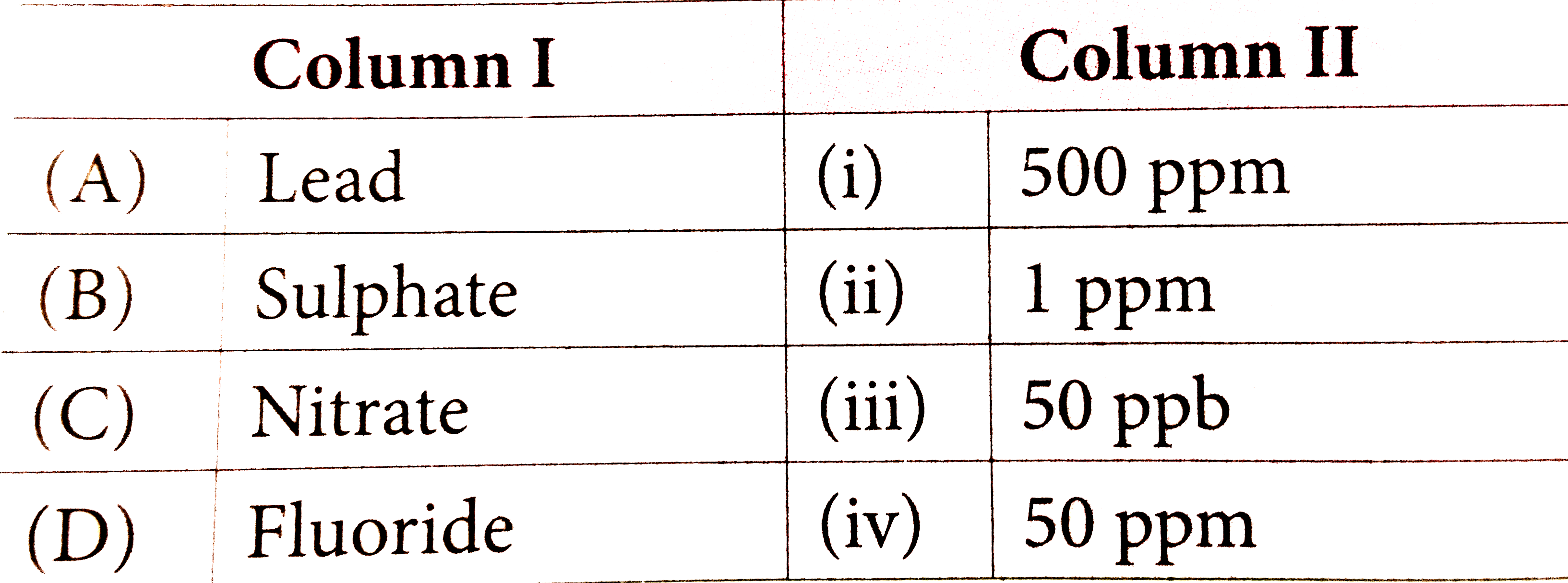In column-I some conditions are mentioned and magnitude of required result ask in column -I is given in column- II, Match the appropriate choice.
Column-IColumn-II(P)A thin layer of water, of surface tension 0.08 N/m present between two massles square plates of area 400cm2 then minimum force (in N and perpenducular to be plate) required to pull the plates apart is:(1)3.2(Q)A water drop at radius 1 cm, suddenly split into 103 identical droplets. If surface tension of water is 0.08 N/m. Then the work done is (in Joule)(2)0.90(R)A soap bubble of radius 1 cm is blown very slowly, so that its radius increase up to 2cm If surface tension of solution is 0.08 N/m then work done (in Joule) in the process is.(3)less than one(S)If water is poured in a container has a circular hole of radius 0.5 mm at its bottom, such that water is just start flow, from the hole. Then the height (in cm.) of water is (surface tension of water is 0.08 N/m.,)(4)0.06
PQRS(A)3231
PQRS(B)4141
PQRS(C)3333
PQRS(D)4241
F=T.4lA=400cm2,l=20cm=0.2m
8100×4×210
=64100=0.064N≅0.06N
(D) h=2T.cosθrρg
=2×8100×1×1045×103×10
=3210×104105=32×104−7=0.031m=3.2cm
Topper's Solved these Questions
Similar Questions
In column-I some situations have been described and in column-II corresponding graph is given. Match the entries in column-I with appropriate entries in column-II.

View SolutionMatch the reactions given in column I with the type of reaction mentioned in column II and mark the appropriate choice

View Solution
Knowledge Check
Match the two columns (Column-I & Column-II)
 Aa-ii, b-iv, c-i, d-iii, e-vBa-i, b-ii, c-iii, d-iv, e-vCa-v, b-iv, c-iii, d-ii, e-iDa-iii, b-v, c-ii, d-i, e-iv
Aa-ii, b-iv, c-i, d-iii, e-vBa-i, b-ii, c-iii, d-iv, e-vCa-v, b-iv, c-iii, d-ii, e-iDa-iii, b-v, c-ii, d-i, e-ivMatch item in column I with those given in column II. Column 1
 AA-V, B-IV, C-III, D-I, E-IIBA-IV, B-V, C-II, D-I, E-IICA-IV, B-V, C-III, D-II, E-IDA-V, B-III, C-I, D-II, E-IV
AA-V, B-IV, C-III, D-I, E-IIBA-IV, B-V, C-II, D-I, E-IICA-IV, B-V, C-III, D-II, E-IDA-V, B-III, C-I, D-II, E-IVAll the compounds listed in Column I react with water. Match the result of the respective reactions with the appropriate options listed in Column II.
AColumnIColumnII(CH3)2SiCl2p.Hydrogen halide formationBColumnIColumnIIXeF4q.Redox reactionCColumnIColumnIICl2r.Reacts with glassDColumnIColumnIIVCl5sPolymerisationt.O2formation
Match the given compounds in Column-I with their appropriate descriptions given in Column II.

View Solution
In columns-II some situations are gien and in column-I some results are given. Match the column according to the correct results.
View SolutionMatch the column I with column II with the type of reaction and mark the appropriate choice.

View SolutionAll the compounds listed in Column I react with water. Match the result of the respective reactions with the appropriate options listed in Column II.

View SolutionMatch the upper limit concentrations of the pollutants in drinking water given in column I with pollutants in drinking water given in column I with column II mark the appropriate choice .

View Solution

